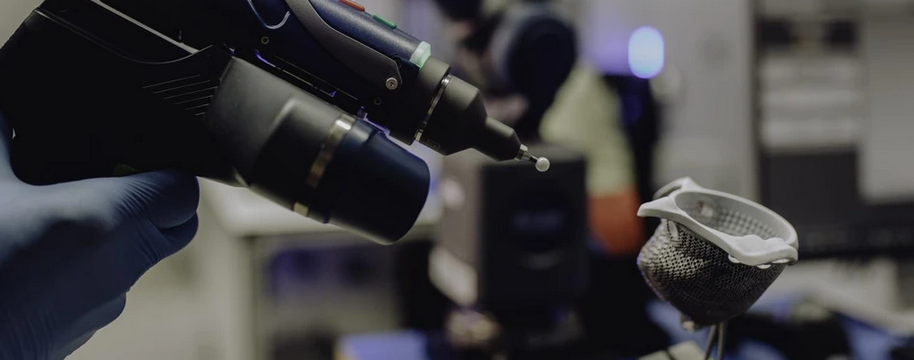The global medical device technology market is expected to grow by nearly 5% in the next four years, with additive manufacturing (AM) playing an increasingly important role — enabling the production of parts ranging from diagnostic equipment components and surgical tools to elements for life-changing orthoses and implants. It’s also a manufacturing process that must, like any other for this sector, employ specific safeguards and processes to guarantee the consistent quality of parts produced.
Regulatory compliance — the challenging ‘non-negotiable’
The non-negotiable for any medtech manufacturing QMS is aligning and complying with the regulatory landscape. It doesn’t matter how well a particular device performs in terms of end-use objectives, failure to comply with quality standards specified by the relevant authority — the Food and Drug Administration (FDA), EU Competent Authorities, etc. — means it’s game over.
And it’s not a simple ask. Not least because you are always working within an evolving landscape. In May 2021, for instance, the EU MDR (Medical Device Regulation) came into force, effectively changing the European legal framework for medical devices within the EU market. Guidance documents by the Medical Device Coordination Group (MDCG) are published and updated frequently to assist with the interpretation of this new regulation — but it also requires stakeholders to keep up with this pace and update their QMS accordingly.
At the same time, it is important to note that compliance is not synonymous with quality. Great quality management systems for compliant medical devices will not automatically result in the highest quality products — if not supported by the right multidisciplinary resources.
Why risk management is at the core of the QMS
Another challenge is that some parts of the regulations can be surprisingly open to interpretation. Erring on the side of caution, this can result in some medtech companies searching for and adopting over-burdensome quality management processes disproportionate to actual need. Which has knock-on implications for both the bottom line and competitive agility in the marketplace. On the other hand, and even worse, not being cautious enough can lead to unsafe medical devices.
As an example, there might be little value in adopting the same manufacturing control methods to produce a simple hospital equipment housing compared to producing a spinal implant, with the latter clearly requiring more extensive controls. Proper knowledge and application of the ISO 14971 risk management standard and regulatory requirements help you determine what is appropriate. An ideal QMS is not necessarily one that is most thorough; it is the one that is designed towards the intended purpose and characteristics of the devices being manufactured.
All of which can understandably be a bit daunting for medtech companies because while they can outsource the production of parts, they can’t outsource the responsibility of final compliance. This is one of the reasons we are so transparent about the certifications our techniques and materials meet. We help ease the burden of proof on the parts we manufacture. But we also help customers understand their particular risk factors and how this translates to specific production processes and QMS requirements. The fact that we are set up to manufacture everything from low-risk medical machinery components to high-risk implants and devices means we have the expertise and flexibility to guide partners down the right path.
And quality is a path, not a single point
It’s also useful to think about where the path to quality begins and ends. Are the product dimensions compatible with the 3D printing technology and material chosen? If not, why not? What will work? How might a small design adjustment produce a better and more consistent outcome? These are questions that need to be asked and answered as part of the first steps during the quality journey with the customer.
Making a complete view together of the full requirements for the products — and how these requirements will be covered by testing — is critical in your next steps to ensure the project is complete and able to assist with generating the necessary technical documentation for the device. At this point, it can be useful to consider worst-case design parameters for requirements such as cleanability or mechanical performance as input for the verification and validation plan.
So, where does quality management end? Of course, it doesn’t. We know from experience in our manufacturing lines that releasing a process after initial validation is not the final chapter of the story. Feedback from part inspections loops back into monitoring and control systems, which is necessary to support continuous improvement and build mature, highly stable manufacturing processes ideally suited to medtech. In the same way, feedback from customer experience is used to scope design and manufacturing changes for future enhancements.
An ecosystem of expertise = best possible results
All of this leads me to one final, important point. What takes a QMS from ‘good’ to ‘great’ is the ecosystem of expertise behind it. The knowledge interactions enabled by skillset diversity.
Design, process control, risk management, material control, biosafety, regulatory, clinical, quality — they all matter. And they all require specific expertise with input from both AM and medical perspectives. A clinical expert will know all about what’s needed for a specific medical application but likely struggles understanding how that translates to parameter settings for consistent 3D printing.
A view over the shoulder of a person using a handheld quality checking tool to assess a 3D-printed surgical guide in front of a computer screen showing Materialise software
At Materialise, our quality process incorporates knowledge of additive manufacturing, medical regulation, and our customers' needs.
Compliance with regulations and standards may be the non-negotiable of quality management for AM medtech parts, but it’s incredibly difficult to achieve without the right mix of minds and technical expertise.
For now, though, the key to aligning AM processes to medtech manufacturing is certainly about finding the right mix of skill sets to match exact customer and regulatory requirements. And that’s our sweet spot.
www.materialise.com

 Deutsch (Germany)
Deutsch (Germany)  Polski (PL)
Polski (PL) 









